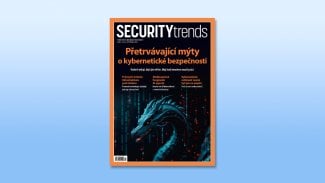access
NAME
access
-
Postfix SMTP server access table
SYNOPSIS
postmap /etc/postfix/access postmap -q "string" /etc/postfix/access postmap -q - /etc/postfix/access <inputfile
DESCRIPTION
This document describes access control on remote SMTP client
information: host names, network addresses, and envelope
sender or recipient addresses; it is implemented by the
Postfix SMTP server. See header_checks(5) or
body_checks(5) for access control on the content of
email messages.
Normally, the access(5) table is specified as a text file
that serves as input to the postmap(1) command.
The result, an indexed file in dbm or db format,
is used for fast searching by the mail system. Execute the
command "postmap /etc/postfix/access" to rebuild an
indexed file after changing the corresponding text file.
When the table is provided via other means such as NIS, LDAP
or SQL, the same lookups are done as for ordinary indexed files.
Alternatively, the table can be provided as a regular-expression
map where patterns are given as regular expressions, or lookups
can be directed to TCP-based server. In those cases, the lookups
are done in a slightly different way as described below under
"REGULAR EXPRESSION TABLES" or "TCP-BASED TABLES".
CASE FOLDING
The search string is folded to lowercase before database
lookup. As of Postfix 2.3, the search string is not case
folded with database types such as regexp: or pcre: whose
lookup fields can match both upper and lower case.
TABLE FORMAT
The input format for the postmap(1) command is as follows:
"pattern
When pattern matches a mail address, domain or host address,
perform the corresponding action.
"blank
Empty lines and whitespace-only lines are ignored, as
are lines whose first non-whitespace character is a `#'.
"multi-line
A logical line starts with non-whitespace text. A line that
starts with whitespace continues a logical line.
EMAIL ADDRESS PATTERNS
With lookups from indexed files such as DB or DBM, or from networked
tables such as NIS, LDAP or SQL, patterns are tried in the order as
listed below:
user@domain
Matches the specified mail address.
domain.tld
Matches domain.tld as the domain part of an email address.
The pattern domain.tld also matches subdomains, but only
when the string smtpd_access_maps is listed in the Postfix
parent_domain_matches_subdomains configuration setting
(note that this is the default for some versions of Postfix).
Otherwise, specify .domain.tld (note the initial dot) in
order to match subdomains.
user@
Matches all mail addresses with the specified user part.
Note: lookup of the null sender address is not possible with
some types of lookup table. By default, Postfix uses <>
as the lookup key for such addresses. The value is specified with
the smtpd_null_access_lookup_key parameter in the Postfix
main.cf file.
EMAIL ADDRESS EXTENSION
When a mail address localpart contains the optional recipient delimiter
(e.g., user+foo@domain), the lookup order becomes:
user+foo@domain, user@domain, domain,
user+foo@, and user@.
HOST NAME/ADDRESS PATTERNS
With lookups from indexed files such as DB or DBM, or from networked
tables such as NIS, LDAP or SQL, the following lookup patterns are
examined in the order as listed:
domain.tld
Matches domain.tld.
The pattern domain.tld also matches subdomains, but only
when the string smtpd_access_maps is listed in the Postfix
parent_domain_matches_subdomains configuration setting.
Otherwise, specify .domain.tld (note the initial dot) in
order to match subdomains.
net.work.addr.ess
net.work.addr
net.work
net
Matches the specified IPv4 host address or subnetwork. An
IPv4 host address is a sequence of four decimal octets
separated by ".".
Subnetworks are matched by repeatedly truncating the last
".octet" from the remote IPv4 host address string until a
match is found in the access table, or until further
truncation is not possible.
NOTE 1: The access map lookup key must be in canonical form:
do not specify unnecessary null characters, and do not
enclose network address information with "[]" characters.
NOTE 2: use the cidr lookup table type to specify
network/netmask patterns. See cidr_table(5) for details.
net:work:addr:ess
net:work:addr
net:work
net
Matches the specified IPv6 host address or subnetwork. An
IPv6 host address is a sequence of three to eight hexadecimal
octet pairs separated by ":".
Subnetworks are matched by repeatedly truncating the last
":octetpair" from the remote IPv6 host address string until
a match is found in the access table, or until further
truncation is not possible.
NOTE 1: the truncation and comparison are done with the
string representation of the IPv6 host address. Thus, not
all the ":" subnetworks will be tried.
NOTE 2: The access map lookup key must be in canonical form:
do not specify unnecessary null characters, and do not
enclose network address information with "[]" characters.
NOTE 3: use the cidr lookup table type to specify
network/netmask patterns. See cidr_table(5) for details.
IPv6 support is available in Postfix 2.2 and later.
ACCEPT ACTIONS
OK
Accept the address etc. that matches the pattern.
all-numerical
An all-numerical result is treated as OK. This format is
generated by address-based relay authorization schemes
such as pop-before-smtp.
REJECT ACTIONS
Postfix version 2.3 and later support enhanced status codes
as defined in RFC 3463.
When no code is specified at the beginning of the text
below, Postfix inserts a default enhanced status code of "5.7.1"
in the case of reject actions, and "4.7.1" in the case of
defer actions. See "ENHANCED STATUS CODES" below.
"4NN
"5NN
Reject the address etc. that matches the pattern, and respond with
the numerical three-digit code and text. 4NN means "try
again later", while 5NN means "do not try again".
The reply code "421" causes Postfix to disconnect immediately
(Postfix version 2.3 and later).
"REJECT
Reject the address etc. that matches the pattern. Reply with
$reject_code optional text... when the optional text is
specified, otherwise reply with a generic error response message.
"DEFER_IF_REJECT
Defer the request if some later restriction would result in a
REJECT action. Reply with "450 4.7.1 optional
text... when the
optional text is specified, otherwise reply with a generic error
response message.
This feature is available in Postfix 2.1 and later.
"DEFER_IF_PERMIT
Defer the request if some later restriction would result in a
an explicit or implicit PERMIT action.
Reply with "450 4.7.1 optional text... when the
optional text is specified, otherwise reply with a generic error
response message.
This feature is available in Postfix 2.1 and later.
OTHER ACTIONS
restriction...
Apply the named UCE restriction(s) (permit, reject,
reject_unauth_destination, and so on).
"DISCARD
Claim successful delivery and silently discard the message.
Log the optional text if specified, otherwise log a generic
message.
Note: this action currently affects all recipients of the message.
To discard only one recipient without discarding the entire message,
use the transport(5) table to direct mail to the discard(8) service.
This feature is available in Postfix 2.0 and later.
DUNNO
Pretend that the lookup key was not found. This
prevents Postfix from trying substrings of the lookup key
(such as a subdomain name, or a network address subnetwork).
This feature is available in Postfix 2.0 and later.
"FILTER
After the message is queued, send the entire message through
the specified external content filter. The transport:destination
syntax is described in the transport(5) manual page.
More information
about external content filters is in the Postfix FILTER_README file.
Note: this action overrides the content_filter setting,
and currently affects all recipients of the message.
This feature is available in Postfix 2.0 and later.
"HOLD
Place the message on the hold queue, where it will sit
until someone either deletes it or releases it for delivery.
Log the optional text if specified, otherwise log a generic
message.
Mail that is placed on hold can be examined with the
postcat(1) command, and can be destroyed or released with
the postsuper(1) command.
Note: use "postsuper -r" to release mail that was kept on
hold for a significant fraction of $maximal_queue_lifetime
or $bounce_queue_lifetime, or longer. Use "postsuper -H"
only for mail that will not expire within a few delivery attempts.
Note: this action currently affects all recipients of the message.
This feature is available in Postfix 2.0 and later.
"PREPEND
Prepend the specified message header to the message.
When more than one PREPEND action executes, the first
prepended header appears before the second etc. prepended
header.
Note: this action must execute before the message content
is received; it cannot execute in the context of
smtpd_end_of_data_restrictions.
This feature is available in Postfix 2.1 and later.
"REDIRECT
After the message is queued, send the message to the specified
address instead of the intended recipient(s).
Note: this action overrides the FILTER action, and currently affects
all recipients of the message.
This feature is available in Postfix 2.1 and later.
"WARN
Log a warning with the optional text, together with client information
and if available, with helo, sender, recipient and protocol information.
This feature is available in Postfix 2.1 and later.
ENHANCED STATUS CODES
Postfix version 2.3 and later support enhanced status codes
as defined in RFC 3463.
When an enhanced status code is specified in an access
table, it is subject to modification. The following
transformations are needed when the same access table is
used for client, helo, sender, or recipient access restrictions;
they happen regardless of whether Postfix replies to a MAIL
FROM, RCPT TO or other SMTP command.
When a sender address matches a REJECT action, the Postfix
SMTP server will transform a recipient DSN status (e.g.,
4.1.1-4.1.6) into the corresponding sender DSN status, and
vice versa.
When non-address information matches a REJECT action (such
as the HELO command argument or the client hostname/address),
the Postfix SMTP server will transform a sender or recipient
DSN status into a generic non-address DSN status (e.g.,
4.0.0).
REGULAR EXPRESSION TABLES
This section describes how the table lookups change when the table
is given in the form of regular expressions. For a description of
regular expression lookup table syntax, see regexp_table(5)
or pcre_table(5).
Each pattern is a regular expression that is applied to the entire
string being looked up. Depending on the application, that string
is an entire client hostname, an entire client IP address, or an
entire mail address. Thus, no parent domain or parent network search
is done, user@domain mail addresses are not broken up into
their user@ and domain constituent parts, nor is
user+foo broken up into user and foo.
Patterns are applied in the order as specified in the table, until a
pattern is found that matches the search string.
Actions are the same as with indexed file lookups, with
the additional feature that parenthesized substrings from the
pattern can be interpolated as $1, $2 and so on.
TCP-BASED TABLES
This section describes how the table lookups change when lookups
are directed to a TCP-based server. For a description of the TCP
client/server lookup protocol, see tcp_table(5).
This feature is not available up to and including Postfix version 2.4.
Each lookup operation uses the entire query string once.
Depending on the application, that string is an entire client
hostname, an entire client IP address, or an entire mail address.
Thus, no parent domain or parent network search is done,
user@domain mail addresses are not broken up into
their user@ and domain constituent parts, nor is
user+foo broken up into user and foo.
Actions are the same as with indexed file lookups.
EXAMPLE
The following example uses an indexed file, so that the
order of table entries does not matter. The example permits
access by the client at address 1.2.3.4 but rejects all
other clients in 1.2.3.0/24. Instead of hash lookup
tables, some systems use dbm. Use the command
"postconf -m" to find out what lookup tables Postfix
supports on your system.
/etc/postfix/main.cf:
smtpd_client_restrictions =
check_client_access hash:/etc/postfix/access
/etc/postfix/access:
1.2.3 REJECT
1.2.3.4 OK
Execute the command "postmap /etc/postfix/access" after
editing the file.
BUGS
The table format does not understand quoting conventions.
SEE ALSO
postmap(1), Postfix lookup table manager smtpd(8), SMTP server postconf(5), configuration parameters transport(5), transport:nexthop syntax
README FILES
Use "postconf readme_directory" or
"postconf html_directory" to locate this information.
SMTPD_ACCESS_README, built-in SMTP server access control DATABASE_README, Postfix lookup table overview
LICENSE
The Secure Mailer license must be distributed with this software.
AUTHOR(S)
Wietse Venema IBM T.J. Watson Research P.O. Box 704 Yorktown Heights, NY 10598, USA



















